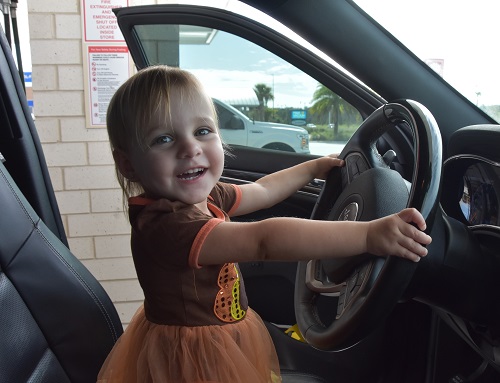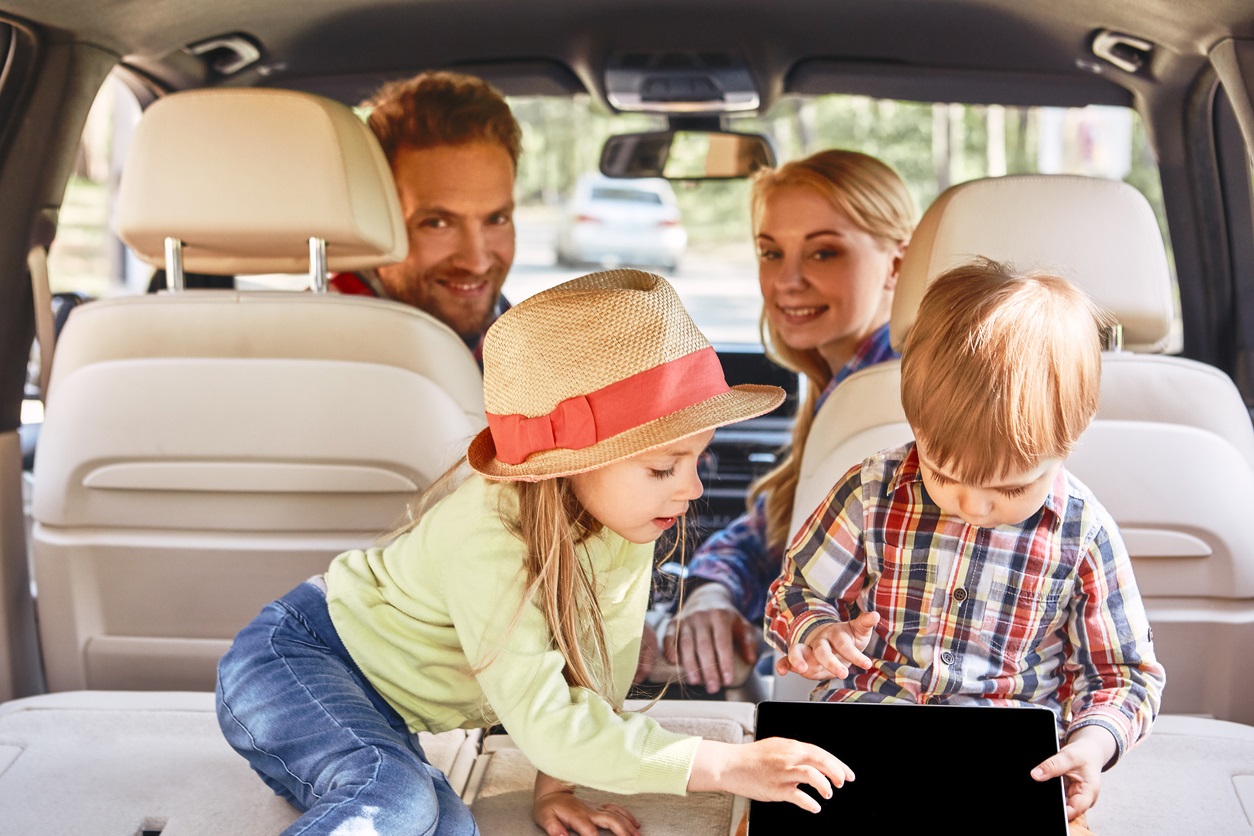For many families, road trips with babies and tots may seem daunting. While traveling with young children may not be without its unique challenges, many will find sharing the world with their littles to be worth the extra temporary inconveniences. Winetraveler hopes these road trip survival tips will help encourage you to get out and travel with your young children when the time is right.
RELATED: 11 Seriously Awesome U.S. Road Trips You Can Take Right Now
Just Go
You’ll figure everything out along the way and return with cherished memories, and the confidence to continue exploring. The extra stresses are often long forgotten once you reach your destination and you witness the joy on their faces.
RELATED: 21 Tips to Make Flying & Traveling with Babies Easier
Stay Calm
Your baby/toddler is likely to exercise their vocal cords at some point on your journey. While it’s much easier said than done, do your best to stay calm. Take a deep breath. Put on your favorite song. Whatever it takes. Listening to an unhappy baby for a short while is lightyears better than getting in a car accident. Pullover, as needed, when it is safe.

Be Flexible and Allow Extra Time
Be flexible and allow extra time (lots of it). Frequent stops are probable. With young babies, it is recommended by many car seat manufacturers to take a break from driving and remove the baby from the car seat at least every two hours. Young babies remaining in the sitting position for a prolonged period may experience respiratory problems. This is especially important with newborn babies unable to support their head yet. Even without knowing that, you would probably stop that frequently anyhow as babies generally eat every 2-3 hours and will require frequent diaper changes.
As your little darling gets older, you can still expect to make stops at least every 2-3 hours for potty and snack breaks. Many rest stops have grassy areas that toddlers can run around and stretch their legs. If time permits, search for playgrounds along the way to break up the drive. Try the free Playground Buddy app to find playgrounds.
Being flexible may mean sometimes skipping the longer, yet more scenic route, or otherwise adjusting your route. If your baby or toddler is irritable, you wouldn’t enjoy the longer route anyhow. Oftentimes efficiency is key when traveling with young children.
At a minimum, expect the trip to take longer than it would during your pre-baby years. If you get to your destination earlier, consider it a win, and celebrate with a glass of your favorite drink. If it takes you significantly longer than you anticipated, destress with two glasses of your favorite drink and lots of baby cuddles after your arrival.
Winetraveler Tip: Stay current on how to make informed decisions about car seat selection and use by reviewing the American Academy of Pediatrics’ policies and publications on motor vehicle safety.
Timing
The best time to drive with your baby will depend on your baby. Some babies may do better driving mostly during nap/sleeping hours. Others will not. Despite many believing babies nap in the car, while many do, there are many who do not. Be flexible, and figure out what time works best for your child.
Keep Essentials Within Reach
Keep essentials (i.e., items to help prevent or curtail inevitable meltdowns) within reach. Having everything you need packed away in the trunk won’t do you much good on the road. You know your baby/toddler best. Maybe it’s a pacifier or a certain favorite toy. Whatever that something is, have it accessible.
Must-Haves
Remember to bring essentials and things that aren’t easy to buy at stores like Walmart and Target. Everyones “essential” items will vary depending on the child. Don’t forget essentials such as, diapers, wipes, creams, changing pad, bags for dirty diapers, pacifiers, bottles, sippy cup, baby carrier, hand sanitizer, sanitizing wipes, napkins, and extra clothes (blowouts/spit up are nearly inevitable to happen at some point). You may want to consider having an extra accessible shirt/outfit for yourself, as well. Once your baby is old enough to engage with toys, toys are nearly just as essential as anything else for everyone’s enjoyment.
Toys and Entertainment
Your littles may be restless before you even get to the highway. Help keep them distracted with lightweight toys and their favorite music. Pack a couple of their favorite toys a week before the trip so when you bring them out the toy is essentially brand new all over again. Buy some new cheap toys, as well. Think Dollar Store cheap. Wait to bring out the “new” toy(s) until they start to seem irritable. Board books, stickers and Imagine Ink coloring books (when age-appropriate) are great road trip toys.
Point anything remotely fascinating out to your toddler to make the car ride more engaging for them. Colorful cars, big trucks, trains, planes, fruit trees, interesting buildings or scenery, anything.
Sitting in the Back
For those traveling with two parents, or at least two adults, accept that one adult may sit in the back for a considerable portion of the drive to help stave off meltdowns, entertain, soothe, retrieve toys that dropped, or anything else that keeps your little darlings content.
For those undertaking a road trip with your baby and/or toddler solo, Godspeed. It is still possible. You’ll get through it, and will likely (hopefully) find it worth it.
Windshield Sunshade
Sun shining directly in your little one’s eyes can be quite miserable for them and they’ll make this known loud and clear. The infant car seat may have a built-in shade you can pull down that can help. Especially, as your little one graduates to the more up-right forward-facing car seat, a windshield sunshade may be useful.
Pack a Cooler
Having a cooler allows you to store healthier snacks, stop and make sandwiches picnic style (saving you money and fewer stops at fast-food restaurants), and if you’re going somewhere with a kitchen, you’ll have the food you need to make dinner without an extra grocery run. Pumping moms may need the cooler to store milk.
If you’re packing meals with you to eat on-the-go, make sure to bring utensils. If your little one is old enough to use a straw, reusable stainless steel straws will likely come in handy at some point during your trip. A baby just learning to use a straw will likely either chew on a paper straw or clamp down on it so hard, it will be unusable after the first sip. Reusable stainless steel straws hold up better. Just note that adult supervision is required when used by children under 12 years old.
Toddler’s Port-a-Potty
If you are road-tripping with a newly potty trained toddler, consider bringing a toddler’s port-a-potty. Newly potty trained tots generally need to pee frequently and often don’t announce their need until time is of the essence. Having a little potty with you allows you to easily pull over and get them on a potty as instantaneously as practicable. It has the added benefit of isolating them from highly frequented public places such as public restrooms (priceless during a pandemic), especially with little ones with curious hands.
Winetraveler Tip: Cleaning a car seat is never fun. It’s less so on a road trip. Cutting a puppy leak-proof potty training pad in half and putting it underneath your tot may be useful in case your newly potty trained toddler has an accident. Make sure to keep the pad surface thin to prevent compromising the safety of the car seat.
Hand Pump
For nursing moms traveling with a pump, consider leaving the bulky electric pump at home and try a cheap manual hand pump. Hand pumps are easier to transport, have fewer parts to clean, don’t require connection to an outlet, and many find them more efficient. NUK hand pump, Lansinoh, and Medela are a few options. Before committing to a change in your pump, use it at home to confirm you like it before hitting the road.
Nursing Moms Stay Hydrated
Hydration is important for everyone, but especially for nursing moms. Moms of newborns often are guilty of neglecting personal care. If you’re nursing, it’s even more critical to maintain supply. Bring water and remember to drink it.
Motion Sickness
Try to reduce sensory input, and provide air ventilation if you notice your little one appears to be getting motion sickness. Plan ahead and talk to your child’s pediatrician before embarking in case your child experiences motion sickness, and consider bringing any doctor-approved medication with you.
Sleeping Tips
It may seem like such a relief when you finally reach your destination and then you try to get your little one to sleep. Getting a baby under the age of 2 (but older than a newborn) to sleep somewhere away from home may have its struggles for many parents. Click here and find tips on how to help get your baby to sleep in a new environment. The tips include how to select accommodations with cribs or Pack n Plays, and how best to provide an optimal sleep environment. If you can get a place with a separate room and/or balcony, you can enjoy the evening and a glass of wine after the baby is asleep.

[…] you gain more and more experience setting things up for traveling, you’ll eventually find yourself able to go on trips that are longer in duration. Some […]